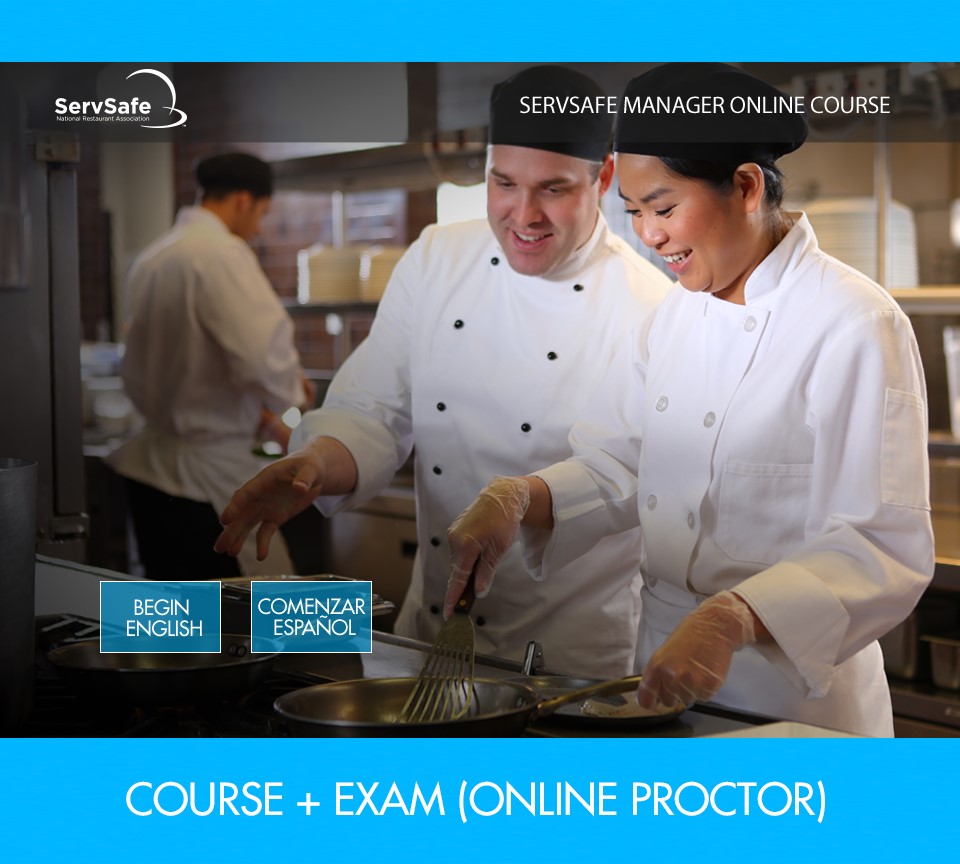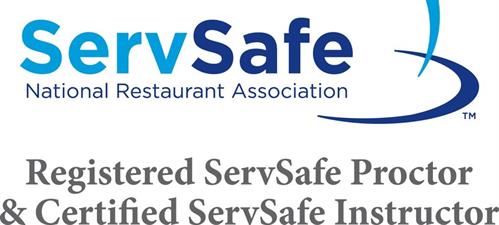Recognizing the Role of a ServSafe Food Handler in Ensuring Food Safety Criteria
Recognizing the Role of a ServSafe Food Handler in Ensuring Food Safety Criteria
Blog Article
Comprehensive Food Handlers Educating for Hygiene and Safety And Security
In today's swiftly evolving food service landscape, comprehensive food handlers training has arised as a critical part for making sure health and security. By instilling crucial practices connected to hand health, food storage, and sanitation, this training not only mitigates the risk of foodborne illnesses however additionally enhances conformity with governing standards.
Value of Food Safety And Security Training

Additionally, food security training helps to make sure that staff members understand existing laws and guidelines, which are crucial for maintaining operational licenses and preventing expensive penalties. Regular training sessions also work as a system for enhancing ideal methods, consequently minimizing the probability of human mistake, which usually offers as a leading reason for food contamination.
Furthermore, buying food safety training can improve an establishment's reputation, as consumers significantly focus on dining experiences that show high safety standards. Such proactive actions not just protect consumers however also add to the lasting success of food companies. In summary, comprehensive food safety training is a vital element of food service procedures, straight affecting both public health and service sustainability.
Trick Concepts of Hygiene
Keeping high criteria of hygiene is crucial in any food handling atmosphere to avoid contamination and ensure the safety and security of customers. The key concepts of hygiene include several essential methods that food trainers should continually apply.
First, hand health is critical; food handlers must wash their hands extensively with soap and water before and after dealing with food, along with after making use of the washroom or touching any kind of potentially contaminated surfaces. Equipment and surfaces need to be on a regular basis cleaned up and disinfected to remove virus. This includes utensils, cutting boards, and countertops, which must be kept in a clean condition.


Correct food storage space is also essential; raw foods must be kept individually from prepared or ready-to-eat products to prevent cross-contamination. servsafe food handler. Additionally, maintaining ideal temperature controls is critical; disposable items should be kept at secure temperatures to inhibit microbial growth
Last but not least, personal hygiene can not be ignored. Food handlers must put on clean clothing, use hair restrictions, and stay clear of working when ill. By adhering to these essential concepts of hygiene, food handlers can considerably minimize the threat of foodborne illnesses and advertise a much safer dining experience for all customers.
Typical Foodborne Health Problems
Although several foodborne diseases can be stopped with appropriate hygiene and risk-free food dealing with techniques, they remain a substantial public health concern. Foodborne pathogens can bring about a variety of health problems, ranging from mild intestinal distress to serious complications and even death.
Typical foodborne ailments include salmonellosis, created by Salmonella bacteria, typically linked to undercooked fowl and eggs. An additional common illness is listeriosis, related to unpasteurized dairy items and ready-to-eat meats, which can be specifically hazardous for expecting females and immunocompromised individuals. Norovirus, regularly acquired from infected food or surface areas, is known for its rapid spread and ability to cause episodes in public settings.
Escherichia coli (E. coli) infection, notably linked with undercooked my blog ground beef and infected fruit and vegetables, can bring about extreme abdominal cramps and kidney failure in some cases. Additionally, Clostridium perfringens, typically found in huge amounts of food that are improperly stored, can create gastrointestinal disorder with signs and symptoms showing up soon after usage.
Understanding these illnesses is essential for food handlers, as recognition can dramatically reduce the danger of contamination and protect public wellness. Correct education and training are crucial components in combating foodborne illness.
Ideal Practices for Food Handling
Reliable food dealing with methods are important in avoiding the spread of foodborne health problems. Correct hand health is necessary; food handlers should wash their hands extensively with soap and water prior to and after dealing with food, specifically raw meat or poultry. This easy action significantly minimizes the danger of cross-contamination
Secondly, maintaining suitable food storage space temperature levels is learn this here now crucial. Perishable products ought to be kept at or below 40 ° F(4 ° C) to hinder bacterial development. Furthermore, prepared foods need to be maintained over 140 ° F(60 ° C) until offered.
Finally, ensuring sanitation of surfaces and devices is important. On a regular basis disinfect counter tops, cutting boards, and utensils, particularly after preparing raw foods. Use separate cutting boards for ready-to-eat and raw foods to better lessen contamination risks.
Moreover, when preparing food, it is essential to follow the principle of "initial in, initially out" (FIFO) to handle stock properly and minimize perishing. Always read and stick to food product tags for safe cooking temperatures and dealing with instructions. By applying these ideal methods, food trainers can dramatically boost food safety and shield public health and wellness.
Applying a Safety Culture
Creating a security culture within a food handling environment is essential for promoting a dedication to food safety and security among all employee. This society highlights the value of food safety and security as a shared responsibility, encouraging employees to focus on hygiene practices continually.
To implement a safety and security culture, companies ought to start by offering extensive training that attends to food handling methods, potential hazards, and the significance of individual health. Training sessions ought to be interactive and customized to the particular roles of employee, ensuring relevance and engagement.
Furthermore, management plays an important role in developing this society. Monitoring ought to model safe methods and interact the significance of food security frequently. Identifying and compensating employees that support security standards can further reinforce these behaviors.
In addition, open communication networks have to be established, enabling staff to report safety and security worries without worry of repercussion. Regular safety and security audits and responses sessions can aid recognize locations for enhancement and reinforce accountability.
Eventually, cultivating a safety and security culture not only enhances compliance with food safety guidelines but also secures public wellness, promotes worker spirits, and adds to the general success of the food taking care of establishment.
Final Thought
To conclude, thorough food trainers training plays a crucial function in promoting health and safety and security within food service establishments. By furnishing employees with important understanding about food safety concepts, common foodborne ailments, and finest practices for handling food, such training significantly lowers health risks. Additionally, promoting a society of safety and security enhances the facility's reputation and straightens with customer assumptions for high you can check here safety and security requirements, ultimately contributing to public health and wellness security and the overall success of the food solution market.
In today's swiftly progressing food solution landscape, detailed food trainers training has arised as an essential part for ensuring hygiene and security.Food security training is essential for preserving high requirements in food handling and prep work, with studies suggesting that proper training can lower foodborne diseases by up to 30%. In recap, detailed food security training is an essential aspect of food solution procedures, straight influencing both public health and service sustainability.

Report this page